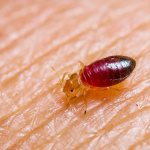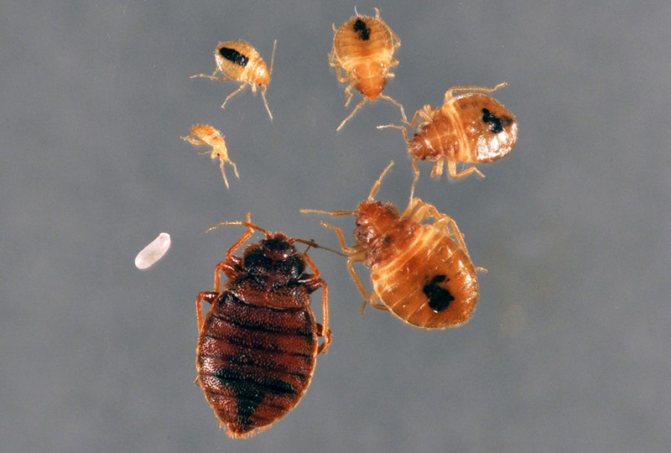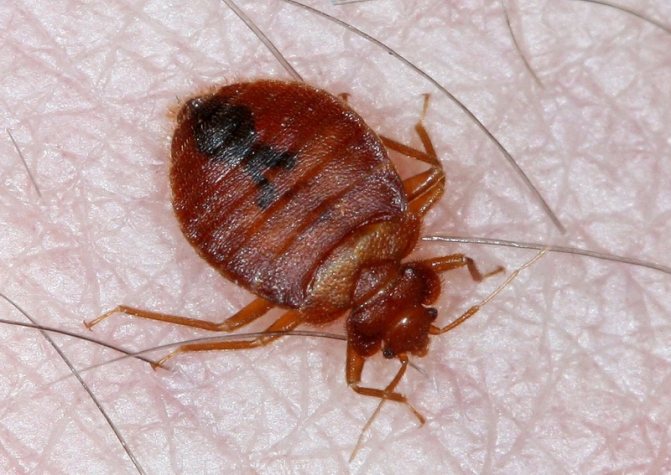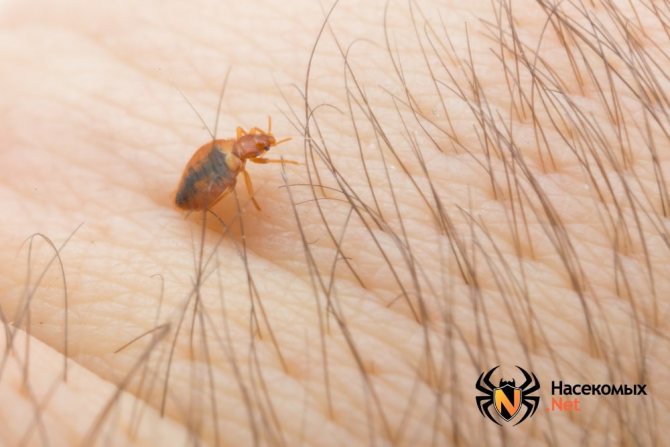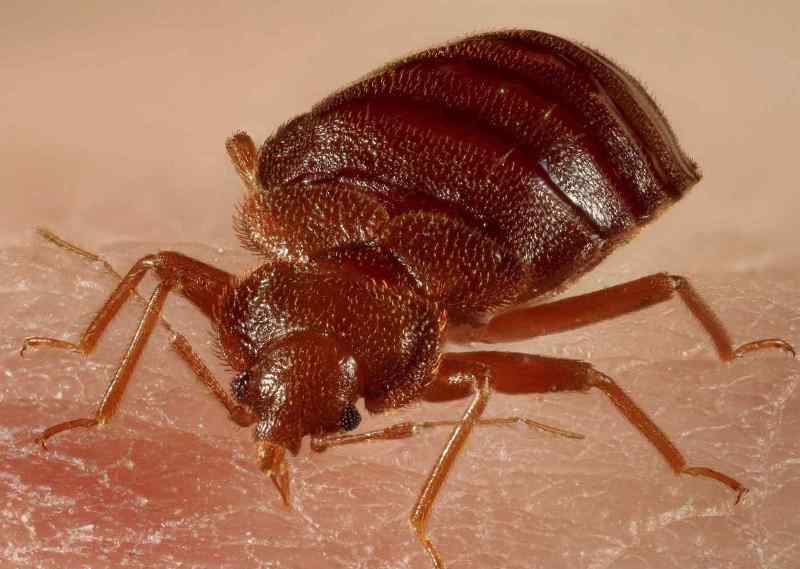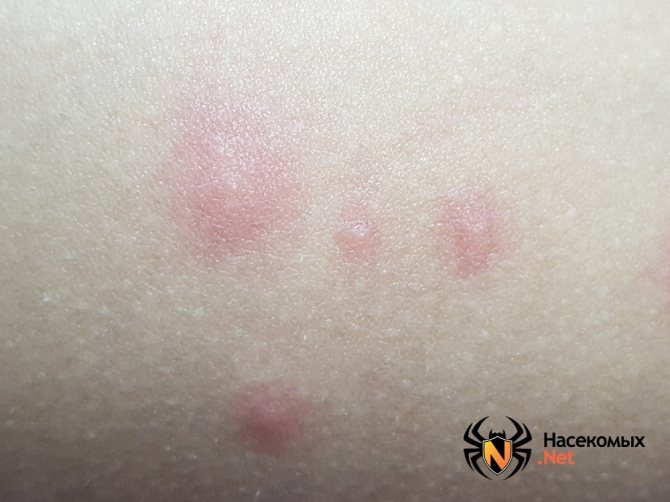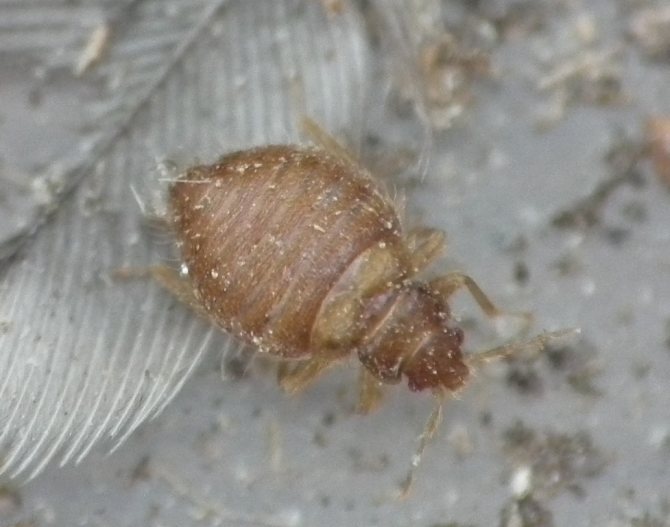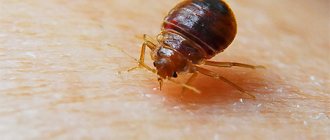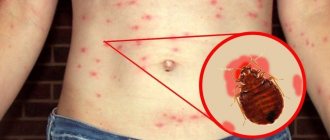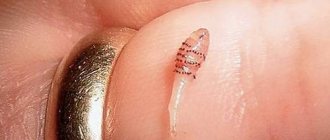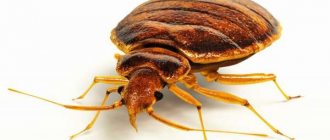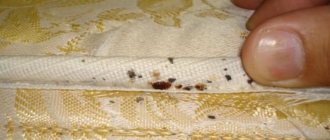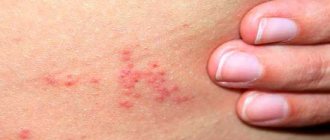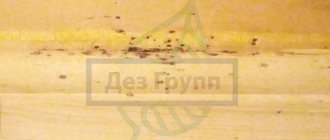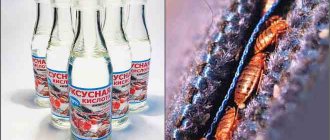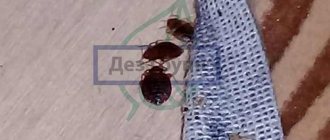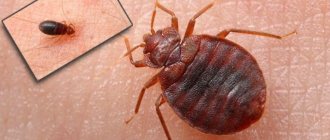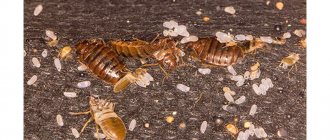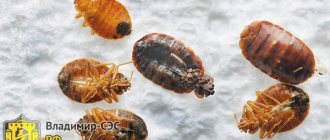Bed bugs are parasites of humans and other warm-blooded animals and birds. Those who have encountered the appearance of insects in the room were able to see that getting rid of them is not easy. To remove pests, you need to know their lifestyle, how they reproduce, and what the bugs eat.
The diet of bed bugs is monotonous, since parasites feed exclusively on human blood.
Domestic bugs and their habitat
Bed bugs have been human companions since ancient times (and they were not always considered pests; for a long time, European doctors believed that these parasites help treat various diseases - from snake bites and ear infections to hysteria). Aristotle and Pliny wrote about them, that is, the first information about what bed bugs look like appeared around 400 BC. Initially, these insects appeared in the Middle East, where they settled in caves together with primitive people and bats. However, the bugs soon settled throughout Europe, and then the Spanish conquistadors brought them to the New World.
Interestingly, bed bugs are found not only in human homes. They are widespread in the wild, where they live not only in caves, but also in hollows of trees. They are also found in the steppe, where they live in the holes of rodents, and in the nests of birds (for example, swallows), which were entwined on the walls of buildings. While researchers still do not know everything about such an insect as a bed bug. But his description is known in great detail.
Bed bug lifestyle
It is known that these blood-sucking parasites are not carriers of infections and life-threatening diseases. And yet their bites cannot be ignored.
Outwardly, they differ from mosquitoes in that they look like a track of several punctures. They are:
- cause itching and irritation of the skin;
- lead to nervousness and lack of sleep;
- affect the psychological state;
- reduce performance;
- provoke allergies.
Scratching the bite sites can lead to pustules. In rare cases, if a child is regularly bitten by bedbugs, there is a risk of iron deficiency anemia.
We also bring to your attention some useful information about bites.
fleas
,
cockroaches
,
ants.
Find out what dangerous cockroaches are for humans and what diseases fleas carry.
What adults look like
Bed bugs are not just one type of insect. There are many varieties in it. But from a visual point of view, there is not much difference. The house bug is not an ordinary beetle. It differs from such insects by the absence of wings. By the same sign, it differs from one of its natural enemies - cockroaches, as well as from other types of bugs (water striders and soldiers). Since it has no wings, the boundaries between the segments of the abdomen are clearly visible. It may seem that his entire body is drawn in thin stripes.
An adult bed bug is dark brown in color. There are no patterns on its back, unlike the soldiers. There is one more sign in which it differs from ordinary, non-blood-sucking insects. For example, the common beetle always has the same body parameters. But for a bug, this indicator depends on whether he is hungry or not. This is because the tissues of his body are elastic.The size of the bug when it is hungry is only 5-6 mm. And after the insect is full, its abdomen is strongly stretched, and the body length increases almost 2 times. Moreover, this insect's appetite is excellent. For one meal, the bug can drink blood almost 2 times its own weight.
Interestingly, the color of the insect also depends on whether it is hungry or not. Usually only well-fed bugs are dark brown, and hungry ones have a light reddish tint.
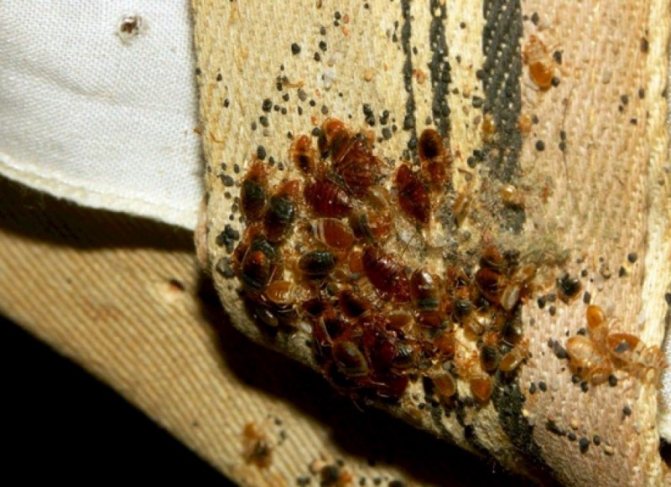
Bed bugs are not just one kind of insect.
House bugs belong to the order of Hemiptera. Therefore, they have a number of common features with the same "soldiers". It is a small, flat, triangular head. Below it is a long proboscis, which is a fused jaw. The proboscis of bedbugs is hard and durable, since it is needed in order to pierce the skin. True, they only bite a person, since dogs and cats have a denser skin, and an insect cannot cope with it.
How should the bite site be treated?
It is worth treating skin lesions left by insects only if they cause discomfort, pain and do not go away within 2–3 days.
What can be done:
- Wipe the damaged area with any alcohol-containing product: vodka, cologne, etc. This procedure helps to reduce pain.
- Drink any of the antihistamines: Fenistil, Diphenhydramine, Tavegil, Suprastin to reduce inflammation.
- Clean damaged areas with soap and water.
- Apply a soothing ointment or rub with sea buckthorn oil.
It is strictly forbidden to comb the bite sites, otherwise an infection can be brought into the wound, which will cause suppuration. With the development of extensive allergies, you should take the usual antihistamines and contact a medical organization.
What do bedbug larvae look like?
In the photo, the nymphs (this is what they are called in entomology) look frightening. They are actually very small and not easy to spot. And the adults are small, and the larvae that have just hatched from the eggs are their miniature copies. Moreover, these copies have everything you need for life - legs, antennae and proboscis, which allows you to drink blood.
Thus, the difference between larvae and adults is their smaller size. This is from a visual point of view. From the point of view of physiology, this, as already mentioned, is the absence of an analgesic secret and the inability to reproduce.
In addition, bed bug larvae are lighter in color. It is so paler that hungry individuals can even be transparent or light yellow. When they are saturated, they do not become darker, but a drop of blood inside is visible through their future shell.
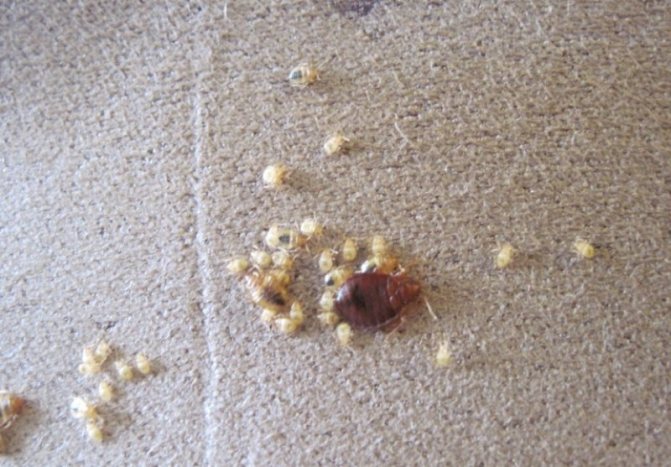

Bedbug eggs are even smaller, up to 1 mm. They are distinguished by an elongated shape and white color.
Since the larvae are small in size, the nymphs are sometimes confused with ants. This is not surprising - the size of the newly hatched larva is about 1 mm, and the body has a more elongated shape compared to adult insects. The nymphs acquire a pronounced resemblance to adult insects only after the first feeding. From that moment on, they begin to gradually darken.
Moreover, this can be seen as a process of growing up. Moreover, about once every 7 days, the larvae molt and leave their old chitinous cover on the floor. So, by the presence of such a cover, one can understand where the refuge of these insects is in the house.
Bedbug eggs are even smaller, up to 1 mm. They are distinguished by an elongated shape and white color. On the top of the egg there is a kind of lid that the newborn nymph opens to start an active life.
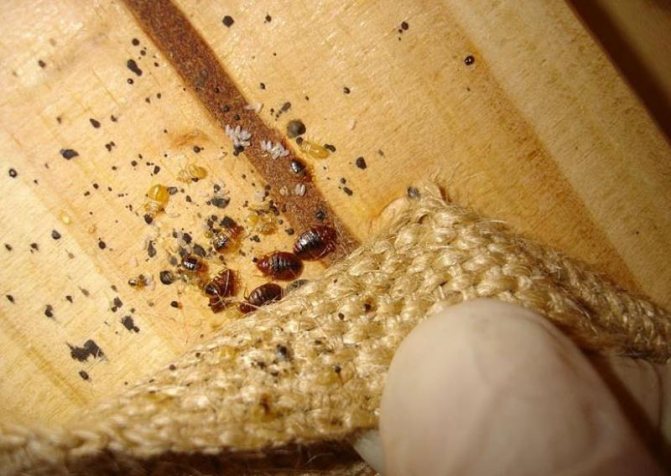

Bed bugs living in bodies of water
Water bugs cannot be ignored. They are all predators. An example of water bugs is the Gladyshev family.They got this name due to the fact that they seem smooth under water. These include smoothies, water striders, rowers, belostomy.
Gladysh is found everywhere: from puddles to oceans, but most of all he loves reservoirs with stagnant water. Its color is changeable and depends on which body of water it is in. The eyes are located on the back, therefore, in order to see the prey, it swims belly up. It flies very well, but its legs are clumsy.
Smoothie reaches 15 mm in length. It has a flat abdomen and cup-shaped wings. A pair of legs grows from the thoracic region. Having an elongated body, it resembles a boat with oars. Making several movements with his legs, like oars, he moves a considerable distance. On the back of the abdomen there is a bubble with air that the insect breathes. He also helps the bug to swim.
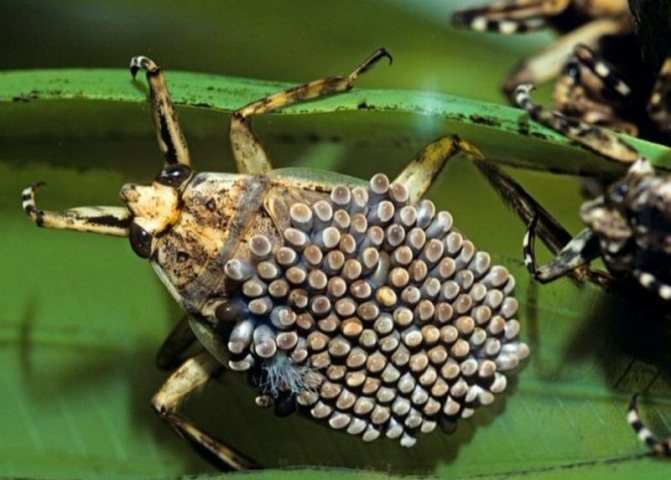

Water bugs cannot be ignored.
There are over 600 species of water striders, and they all differ from each other. Outwardly, the insect looks like a stick. Sizes range from 1 mm to 3 cm, color - from dark brown to brown. The body and legs are covered with special hairs, thanks to which the insect can glide through the water. She moves quickly, 3 pairs of limbs of different lengths help her in this. Water striders have well developed eyesight, but they are still able to capture information using water vibrations.
Another family of bugs of this species is water scorpions. These are very large insects: the length reaches 2.5 cm, the width is up to 1 cm. The head is small, with small antennae and eyes. A flat gray-brown body with smoky wings has 2 breathing tubes at the end, with the help of which the bug breathes atmospheric air.
The bedbug world is diverse. Some of its representatives need to be exterminated (domestic bugs), and with others - to coexist peacefully.
How to detect presence in the house
These insects are very mobile. An adult can run a distance of more than 1 meter in just 1 minute - and this is more than 100 times its own size. Due to their flat body, these animals do not take up much space. Therefore, they can even live between books, behind baseboards and under carpet. Their small size helps them move successfully between rooms in apartment buildings. Sometimes apartment owners see not even the uninvited guests themselves, but traces of their vital activity, that is, excrement that resembles poppy seeds.
Features of the meal
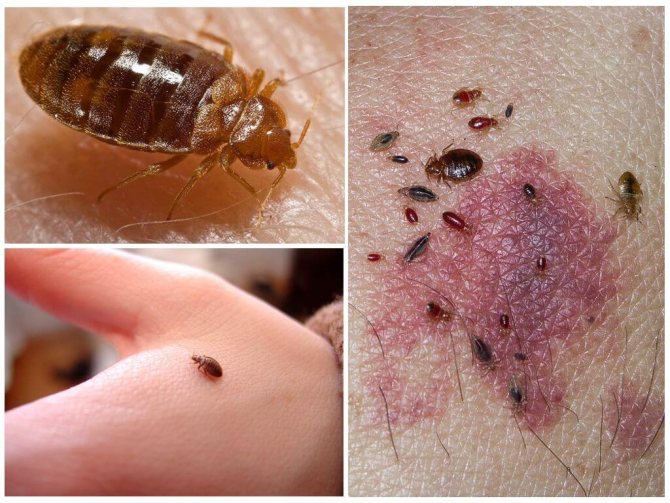

House bugs
Pests are nocturnal. They crawl out of shelters in the middle of the night, when a person is fast asleep. Bites on the human body appear from 3 am to 8 am. The most voracious female of all. An adult individual drinks about 7 ml of blood at a time. The male needs 5 ml for full saturation. Nymphs of different ages drink blood to a minimum. Strong contamination of the premises is dangerous for a person when an entire colony comes out for a meal.
Differences from pests and other insects
Since all pests are small in size, and, moreover, are very mobile, it will not be possible to immediately recognize what the insects look like. But you can focus on the differences between the bug and other pests.
For example, if a small insect does not see individual segments of the shell and has wings, then this is not a bed bug, but some kind of street insect. Contrary to popular belief, house bugs do not have wings. Although this description may correspond to some types of cockroaches.
The very small, black-dot-like jumping insects are fleas. Bedbugs run fast, but they do not know how to jump.
Bed bugs have a faint, subtle odor. While other species of bedbugs that live in nature, it is just that they have a very strong and unpleasant odor. For example, the bug bugs are expressively called "stinkers".Soldier bugs, with black legs and red backs with a characteristic black pattern, also have a strong odor designed to scare away birds (indeed, birds do not eat these insects). Turtle bugs, which are harmful to agricultural crops, have a very strong odor, which not only protects them from predators, but also plays an important role in the communication process of these individuals.
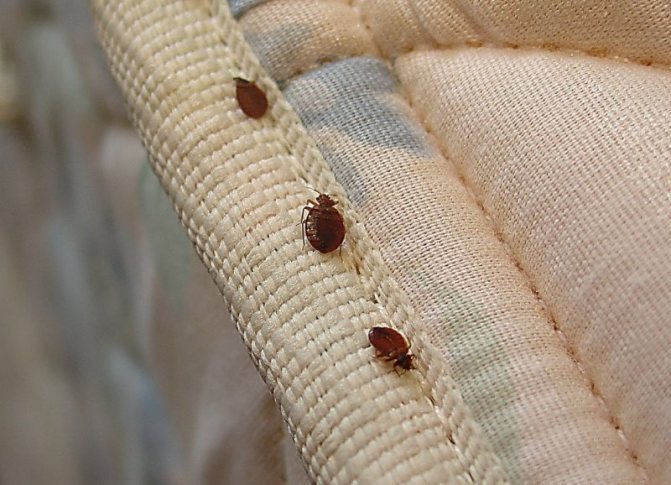

Bed bugs have a faint, subtle odor
If an insect has a "waist", that is, a constriction in the abdomen, then it may be a kind of wasp (although in the classic form, wasps still differ in a characteristic yellow-black color), as well as ants. In bedbugs, the body is always wide, and in hungry people it is flat, but round.
Such insects also differ from lice, both in size and color. But only adults. Since the larvae are much smaller and lighter in color, they can be confused with lice. It must be remembered that these insects differ in their way of life. Lice are of several types, but those that look like bedbugs are found only on the hair. Moreover, they are particularly mobile. But bugs on the scalp could not move at all - they have a completely different structure of the legs, so they can only bite open areas of the skin.
Some entomologists advise counting the number of insect legs. For example, a round flat parasite of dark color and with a small head, it can be a bug (then it will have 6 limbs), and a tick (then there will be 8 legs).
Sometimes bedbugs are confused with nymphs (i.e. larvae) of cockroaches. But the nymphs of these insects have a difference, which they retain in adulthood - these are peculiar, tailcoat-like tails, tail-tails on the back of the abdomen.
How long can they live without food in an apartment and on the street?
Bedbugs tolerate long periods of fasting well, since they have the ability to fall into suspended animation. A striking example is water bugs, which can be in a suspended state for 5-6 months.
There are a large number of different types of bedbugs in the world, conditionally divided into three groups, in accordance with their food preferences. Parasites prefer human or animal blood, food of predators consists of insects, invertebrates, fry, bugs - "vegetarians" feed on plant sap. To feed all these groups use a special piercing-sucking apparatus, thanks to which they can pierce the shell of the power source.
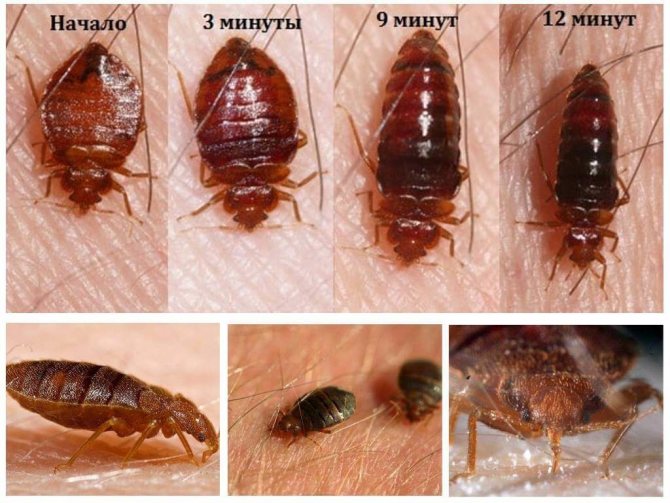

Lifestyle
To distinguish these insects from others, relatively more harmless, it is necessary to take into account not only the appearance, but also the visual signs in combination with their habits and lifestyle.
In particular, bed bugs leave characteristic bite marks that cannot be confused with mosquito and tick bites. First, the latter usually stick to one point. Secondly, mosquitoes leave single, highly itchy and bulging traces due to tissue swelling. While bugs leave several bites at once, which look like a path made by an insect of red dots (there can be 3-4 of them, and they are always stretched out in a line). Since several individuals can bite a person at once during the night, several stripes will appear on the body at once in the morning.
What is the danger?
Sometimes, with an insect bite, an allergic reaction to the substances that make up the anesthetic can be observed. There have been isolated cases when the consequence was anaphylactic shock. Usually, however, a bug bite is no more harmful than a mosquito bite.
Despite the fact that studies have shown the presence of pathogenic organisms in the body of these insects, bed bugs are not carriers of diseases. At the moment, there are no known cases of infection after being bitten by this parasite. Perhaps the most unpleasant is the psychological discomfort that does not allow you to get a good night's sleep and fear of insects in general.The victim may develop a rash on the skin, the general well-being will decrease, not to mention the mood.
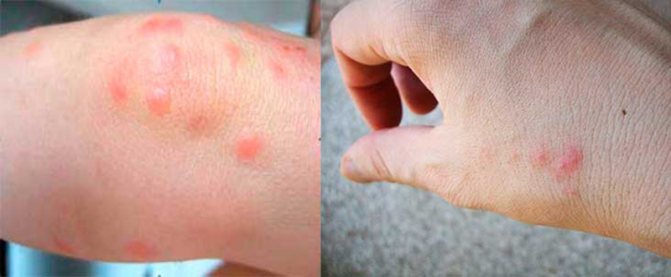

Brushing the bites can lead to infection. In this case, the wound will not heal for a long time and may even begin to fester. The most reasonable thing in such a situation is to go to the hospital.
Breeding method and feeding frequency
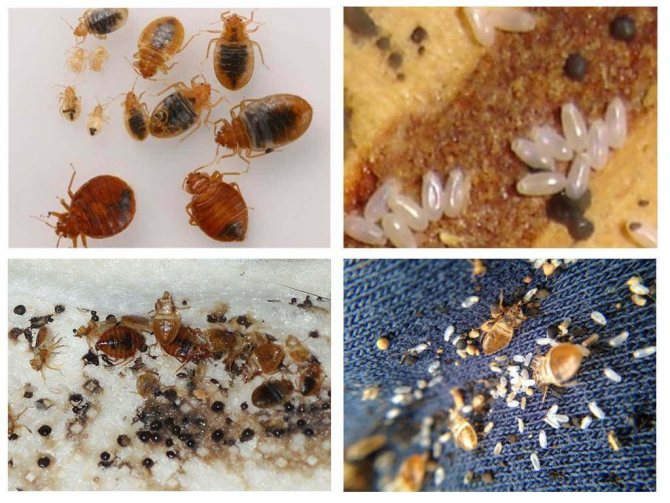

Bed bugs and eggs
The female bed bug is able to lay up to 250-500 eggs. To an adult, the development of an egg occurs within one and a half to two months at a temperature of 15 ° C heat. If the temperature is lower, the larva stops developing. With such productivity of females, a natural question arises, how often the bugs feed in order to ensure their viability.
Interesting!
For the larva to pass to another stage, it needs to drink blood at least once, so it feeds more often, but in small portions. In the absence of nutrition, development slows down sharply. But bed bugs are unpretentious and tenacious insects. The larva can do without food, but not develop until 1.5 years.
Bed bugs that have reached adulthood should be fed at least 1 time per week at a temperature of 15-20 degrees, and much more often in hot climates. In 7-15 minutes, an adult is able to drink about seven milligrams of blood, which is twice the weight of the insect itself. If the source of food in the form of blood for the parasite is absent for a long time, then it falls into a state of suspended animation, in which all life processes slow down. In this form, he can live up to a year in anticipation of his next victim.
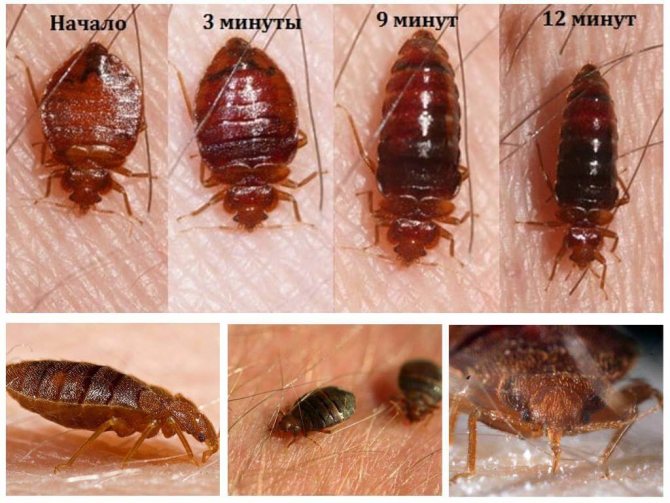

The satiety of the bug
In comfortable conditions, the bed bug lives for 12-14 months, but if during this period it hibernates (suspended animation), then the life expectancy increases. What bugs are afraid of is severe cold. At low subzero temperatures, they completely die.
If parasites are in a non-residential area for some time, a completely reasonable question arises, what do bugs eat other than human blood. They are able to attack rats, pigeons, actively parasitize in chicken coops. In the complete absence of food, in order to preserve their life, to get blood, they can attack dogs and cats, but it is very difficult to get to the capillaries on the body of these animals because of the thick hair, so such cases are quite rare. Even in the vicinity of such animals, they will prefer to migrate to other places or premises.

